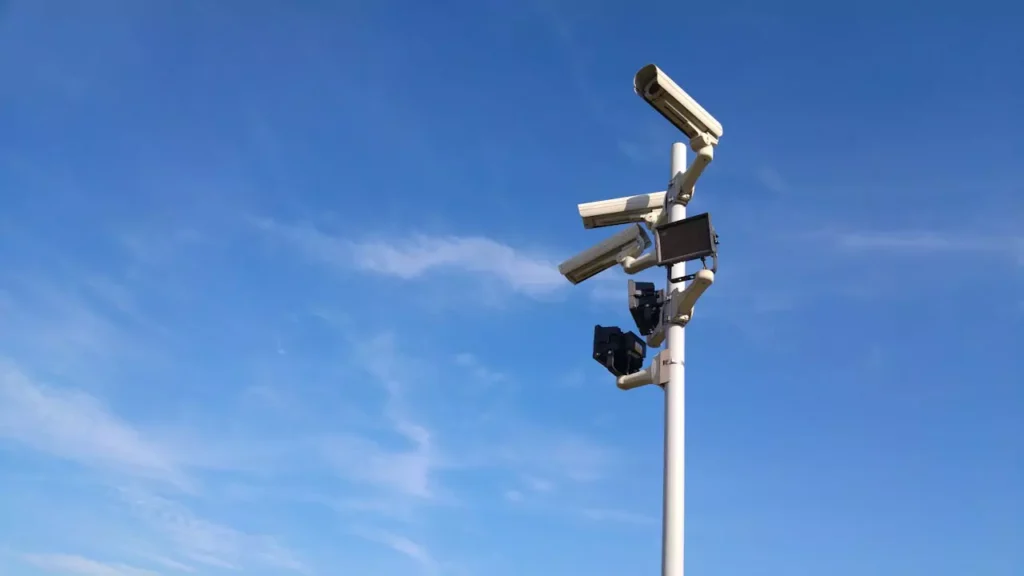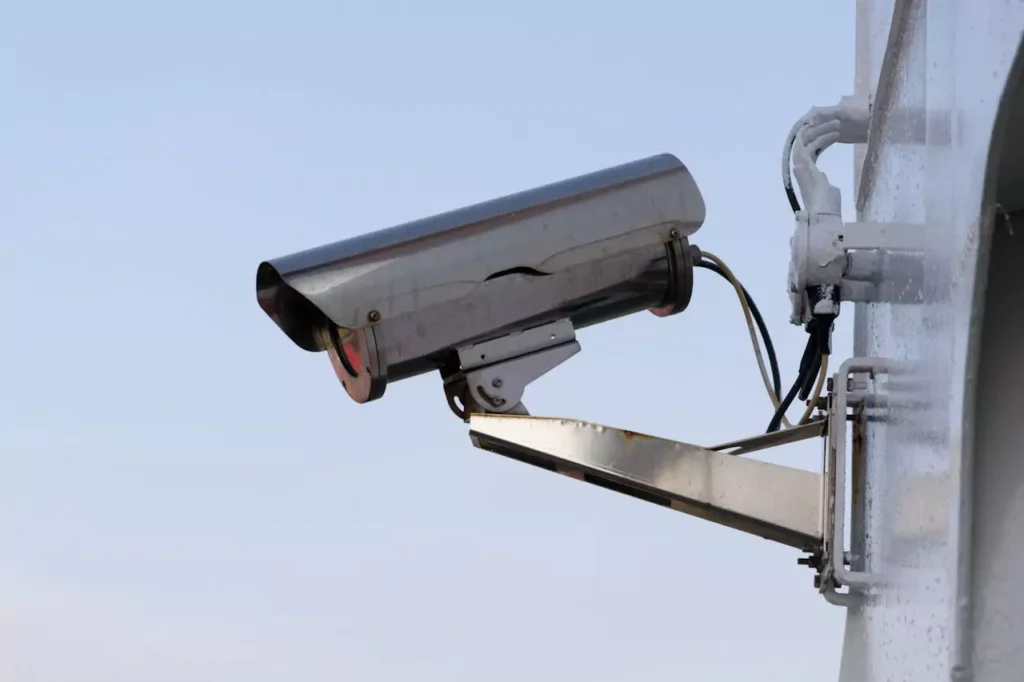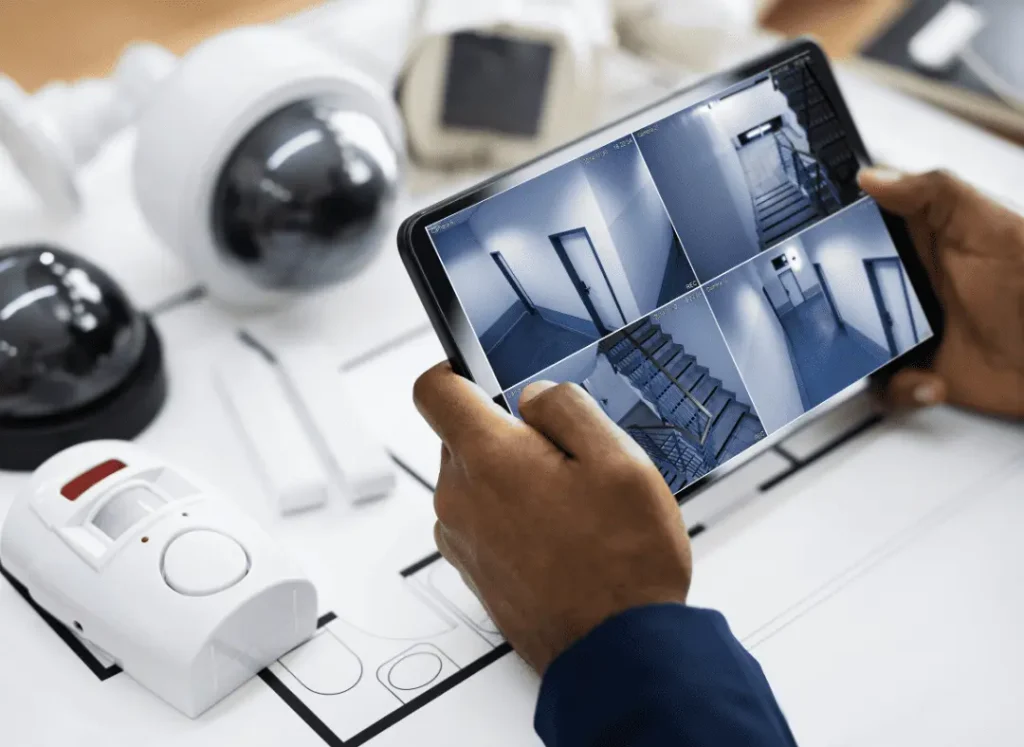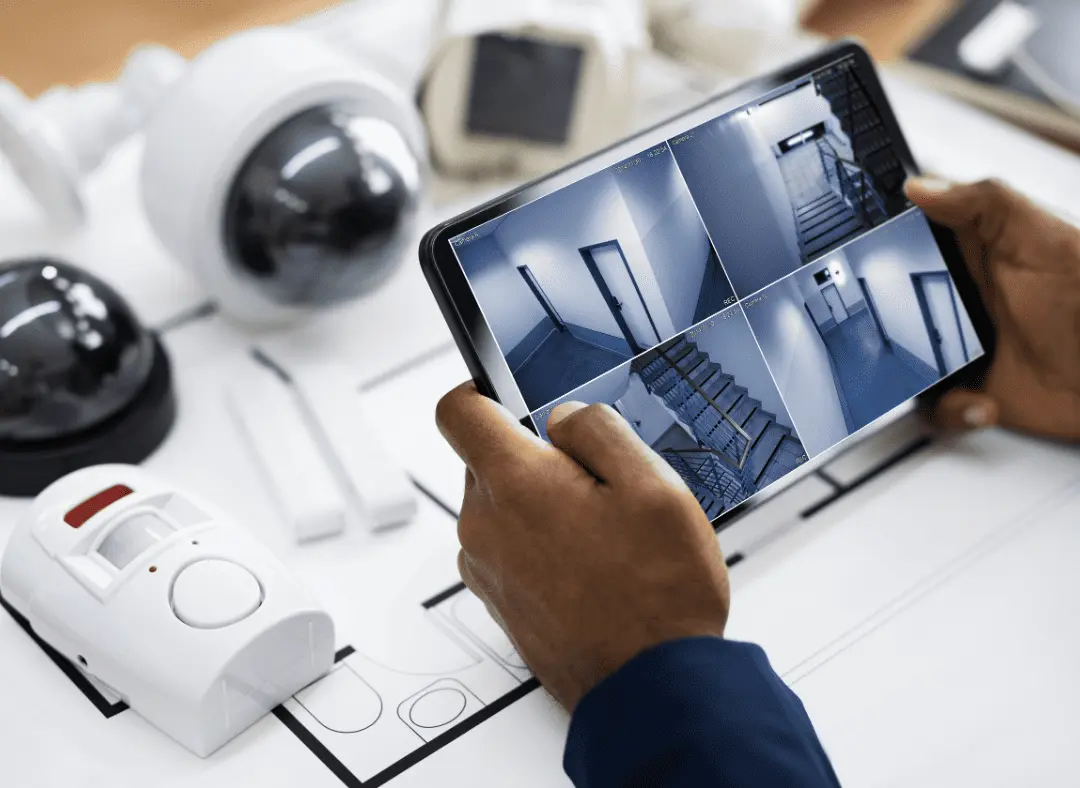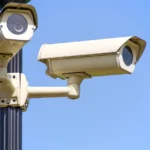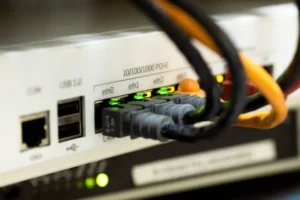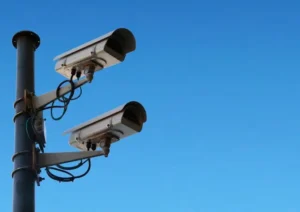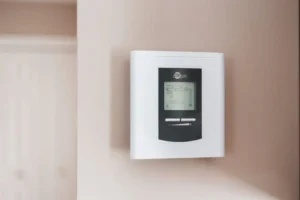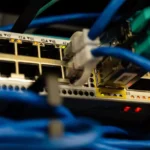Now Reading: WiFi vs Wired Home Security Cameras: Which One Is Better?
- 01
WiFi vs Wired Home Security Cameras: Which One Is Better?
- Home
- Smart Home
- WiFi vs Wired Home Security Cameras: Which One Is Better?
WiFi vs Wired Home Security Cameras: Which One Is Better?
![]() Anne MaddisonHome Security, Smart HomeJuly 28, 2025210 Views
Anne MaddisonHome Security, Smart HomeJuly 28, 2025210 Views

Security cameras are a smart way to help protect your home. They let you see what’s going on, even when you’re not there. Some people use them to check on pets. Others use them to watch for deliveries or keep an eye on their front door.
If you’re planning to get one, the first choice you’ll need to make is how it connects. Most home cameras fall into two groups. One type uses WiFi. The other connects with wires. They both do the same thing — they let you see what’s happening at home. But how they work, how easy they are to use, and how reliable they are can be very different.
In this guide, we’ll break down the pros and cons of WiFi and wired cameras. By the end, you’ll know which type of camera fits your home and your needs.
What Are WiFi Security Cameras?
WiFi security cameras are a popular choice for many homes, especially now that more people use smart devices and want easier ways to protect their space. These cameras connect to your home’s internet using WiFi instead of wires. That means no drilling, no wall cables, and no need for a professional installer in most cases.


Installation
Most WiFi cameras are either plugged into a wall or powered by a battery. Battery-powered models can usually last between 2 to 6 months before needing a recharge. Setup is often quick and easy, taking about 10 to 15 minutes. You just connect the camera to your home WiFi and download the app, which usually works on both iPhone and Android phones.
One important thing to check is your WiFi. Most cameras work with 2.4GHz networks, not 5GHz. So make sure your router supports that before buying.
Reliability
WiFi security cameras are convenient, but they do depend on your home internet connection. If your WiFi is weak or goes offline, the camera may stop recording or sending alerts. The strength of your router and how far the camera is from it can affect how well it works.
Walls, metal doors, and electronic interference can weaken the signal. To improve reliability, try placing the camera closer to the router or use a WiFi extender. Some high-end models also offer local backup storage, so they can still record even if the internet drops. When your internet is strong and stable, WiFi cameras work well for real-time alerts, clear video, and remote viewing from anywhere in the world.
Flexibility
WiFi cameras are great for people who move often or live in rentals. Since you don’t have to drill holes or do permanent wiring, it’s easy to install and remove them. This is why many apartment owners, small home dwellers, and renters prefer WiFi cameras.
You can watch live video anytime on your phone, even if you’re at work or on vacation overseas. Some people use them to check on pets, kids, or elderly family members during the day. If the camera detects motion, it can send a notification right to your phone. Some cameras even work with smart assistants like Alexa, Google Assistant, or Siri. You can say something like “show me the front door” and view your camera on your phone or smart display.
Many models are also made for indoor and outdoor use. If you want to place one outside, look for weather-resistant features so it can handle rain and sunlight.
Storage
Most WiFi cameras use cloud storage, which saves your videos online. This lets you replay footage even if the camera is stolen or turned off. Some brands offer a free trial, but after that, you may need to pay $3 to $10 per month, depending on your plan and features. These plans also decide how long your footage is saved—common options include 7, 14, or 30 days.
Higher-quality video like 2K or 4K uses more storage than 1080p. To protect your recordings, many apps use login protection and encryption so only you can view them.
Cost Breakdown
WiFi cameras are usually cheaper upfront, with prices ranging from $40 to $200 depending on the brand and features like video quality, night vision, or smart alerts. But most also require a monthly or yearly subscription for cloud storage. These typically cost $3 to $10 per month per camera. Some plans charge more for features like longer video history, person detection, or activity zones.
So while the camera itself might seem affordable, the total cost can grow—especially if you have multiple units. For example, using two or three WiFi cameras with subscriptions can easily cost over $200 in the first year.
What Are Wired Security Cameras?
Wired security cameras are connected to your home using physical cables. They are often chosen for long-term setups where people want strong, stable, and high-quality video recording. These cameras send footage through a cable to a recorder, such as a Digital Video Recorder (DVR) or Network Video Recorder (NVR), and sometimes to a monitor or mobile app.


Installation
Wired cameras usually need professional installation or a bit of DIY skill. You’ll have to run cables through walls, ceilings, or along baseboards. This takes more time and effort, especially if you’re covering a large space. Once installed, wired cameras stay connected directly to power and to the recorder. That means you don’t have to worry about WiFi signals or replacing batteries.
There are two common types of wired systems:
- Coaxial cable with DVR – These are older systems but still work well for basic security.
- Ethernet cable with NVR – These use Power over Ethernet (PoE), which means one cable provides both power and data, making setup a bit easier.
Reliability
Wired cameras are known for being very reliable. They don’t rely on your home’s WiFi, so the footage won’t lag or drop out because of slow internet. This makes them ideal for people in areas with weak WiFi or homes with many devices already on the network.
Because they’re hardwired, these cameras can record 24/7 without stopping. Even if your internet goes down, everything is still saved on your recorder. This makes them a strong choice for homeowners who prioritize safety or for businesses needing constant surveillance. Many wired systems also offer high video quality—some up to 4K—depending on the camera and recorder you choose.
Flexibility
Wired cameras are not as flexible as WiFi cameras. Once they’re installed, they’re harder to move without unplugging wires and rerouting cables. If you live in a rental, plan to move soon, or just want the freedom to change camera positions easily, a wired system might not be the best fit.
However, they’re a solid option for homeowners who want a permanent setup and full coverage with multiple cameras tied to one system.
Storage
Instead of saving video to the cloud, wired systems usually save everything on a hard drive inside the DVR or NVR. That means you don’t need a monthly subscription for cloud storage.
Most recorders come with storage between 500GB and 2TB. Once the drive is full, the system automatically records over the oldest footage unless you save it manually.
Some systems also let you view your footage remotely through an app, but it may take a bit more setup than WiFi cameras. You might need to adjust your router settings or use the brand’s software to make remote viewing work.
Cost Breakdown
Wired cameras usually cost more at the beginning, but they don’t have ongoing fees. Most wired systems come as a full kit with multiple cameras and a recorder, usually costing between $200 to $600.
The footage is saved on a built-in hard drive, so there’s no need for a cloud plan or subscription. This makes it a one-time purchase for most people. The biggest extra cost with wired systems is installation. If you’re not comfortable running cables yourself, hiring a professional can cost a few hundred dollars, depending on the size of your home. Even with that, the full cost of a wired system can still be cheaper in the long run—especially if you want full coverage and don’t want to deal with monthly fees.
Side-by-Side Comparison Between WiFi vs Wired Security Cameras
| Feature | WiFi Cameras | Wired Cameras |
| Connection Type | Connects wirelessly to your home WiFi network | Uses Ethernet or coaxial cables to link directly to a recorder (DVR/NVR) |
| Installation | Simple DIY setup; no drilling required | Professional installation often needed; requires drilling and cable routing |
| Signal Reliability | Depends on internet strength; can lag or disconnect | Extremely stable; does not rely on internet connection |
| Portability | Highly portable; ideal for renters or frequent movers | Fixed in place; not meant to be moved once installed |
| Power Source | Battery-powered or plugged into a wall outlet | Must be plugged in; usually connected to a central power source |
| Storage Options | Cloud-based or local SD card (may have monthly fees) | Local storage via DVR/NVR; no monthly subscription needed |
| Smart Features | Often includes mobile alerts, app viewing, and voice assistant integration | Fewer smart features, but newer systems may support apps and mobile access |
| Video Quality | Ranges from 720p to 4K; depends on model and WiFi stability | Consistent high-quality video (often 1080p or higher) |
| Price (Initial) | Lower upfront cost; pay for storage separately if needed | Higher upfront cost, but no monthly storage fees in most cases |
| Best For | Renters, small homes, people who want flexibility and easy setup | Homeowners, large properties, those needing constant and reliable surveillance |
| Overall Cost | Cheaper at first, but monthly subscriptions can add up over time | More expensive upfront, but usually cheaper in the long run without extra fees |
Is a Security Camera Really Secure?
No matter how much you try to protect yourself, there will always be people out there trying to find ways around it. And when it comes to security cameras, it’s no different. Wired cameras are usually seen as more secure because they don’t rely on WiFi. But they’re not perfect. Someone could still cut the wires or damage the equipment if they were determined.
WiFi cameras carry more risks because they connect to the internet, making them a target for hackers. That said, they can be secure if you take the right steps. Here’s what helps:
- Change the default password
- Turn on two-factor authentication
- Buy from trusted brands that offer encryption
Security camera companies are always working to improve safety, but no system is 100% secure. In 2019, there was a real case where a man hacked into a smart home camera and started talking to an 8-year-old girl in her bedroom. Thankfully, the girl called for her parents right away. But it raises a scary question—how long had he been watching before he said something?
👉 Watch the video of that hacking incident to see how it happened.
That case made the news. But what about the ones that didn’t? Many people don’t even realize they’ve been hacked. If someone quietly watches without speaking or moving the camera, there’s no alert, no sign—just silence.
In the end, security cameras are only one layer of protection. They help you review footage or identify someone after something happens. But they can’t stop crime on their own. It’s best to use them along with other smart safety habits.
If you want a more in-depth look at the risks of having a wireless security camera at home, read our full guide here.
Final Verdict: Which Should You Choose?
There’s no one-size-fits-all answer when it comes to choosing between WiFi and wired security cameras. The best option depends on your home, budget, and what matters most to you.
Choose WiFi cameras if you want something easy to install—especially if you rent or plan to move in the future. They’re great for people who want app access, mobile alerts, and the freedom to move cameras around. WiFi cameras are also ideal for smaller homes or apartments with decent internet. This setup works well for parents who want to check in on their kids during work hours or pet owners who want to monitor their fur babies.
Go for wired cameras if you’re a homeowner looking for long-term, stable security. Wired systems are harder to tamper with, don’t rely on WiFi, and usually provide reliable 24/7 video. They’re best for larger properties or anyone who doesn’t want to worry about batteries or signal drops. However, they’re not as convenient to install or move once set up.
Many homes use both—WiFi cameras indoors for flexibility, and wired cameras outdoors for strong, permanent coverage. At the end of the day, both options can help protect your home. Choose the one that gives you the right balance of convenience, reliability, and peace of mind.
Disclaimer: Some links on this page are affiliate links. This means we may earn a small commission at no extra cost to you if you make a purchase through them.
Related Posts
Previous Post
Next Post
Home AppliancesJuly 28, 2025
Can Air Conditioner Make You Sick?
Climate ControlJuly 27, 2025
What Air Conditioner Size Do I Need?
Climate ControlAugust 24, 2025
Are Home Air Conditioner Tune Ups Necessary
Home AppliancesAugust 23, 2025
Can Air Conditioning at Home Trigger Asthma?
- 03
Climate ControlJuly 28, 2025
Can Air Conditioner Make You Sick?
- 04
Home AppliancesJuly 27, 2025
What Air Conditioner Size Do I Need?


